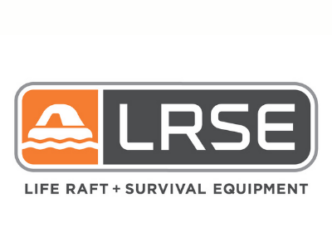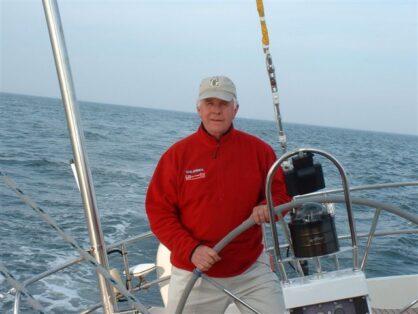The Newport Bermuda Race is closely followed by an onshore team of race officials alternating four-hour watches as they monitor emails, satphone and radiotelephone calls, and the online tracker that identifies entries and their positions. At a little after 2000 EDT on the 2012 race’s third night, June 17, watch-stander Nicholas Weare, based in Bermuda, received an email from the race’s consulting physician in Massachusetts. He promptly reported it to race officials:
“Message received from Dr. Barbara Masser advising that she lost satphone contact 7:49 EDT while in communication with Seabiscuit regarding a 38-year-old insulin dependent male who has not eaten or drunk for 24 hours, with elevated blood sugar and appears confused.”

These were the first two of more than two dozen emails (not to mention many satphone and radio calls) sent over the next seven hours concerning the serious problem on board Seabiscuit, a J-46 in the race’s Double-Handed Division. The effort to assist and, eventually, evacuate the seasick sailor, Nathan C. Owen, included more than two dozen people, including race officials, rescue personnel in the U.S. and Bermuda, and the crews of two other racing boats and a cruise ship.
As Dr. Masser (Associate Director of the Department of Emergency Medicine at Beth Israel Deaconess Hospital, Needham, Mass.) tracked Owen’s condition, she advised that he needed saline IV hydration and might have to be taken off Seabiscuit. Steven Thing, Chair of the Bermuda Race Organizing Committee’s Communications Committee and Emergency Management Team, got to work considering means of providing medical assistance and, if needed, evacuation.
Conditions were far from optimum. The wind was blowing hard, the sea was rough, night had fallen, and Seabiscuit had no seasickness medication or IV hydration equipment. Owen’s crew, Jonathan Green, was sailing the boat alone, handling communications, and caring for his shipmate. If Owen were evacuated, Green would be obliged to get the boat to Bermuda, nearly 200 miles ahead, very likely without assistance.
In addition, communications were spotty. Many satellite phone calls were either dropped in mid-conversation or not picked up, although emails were getting through as were voice messages on the satphones that had voicemail capability.
Green made a call on VHF Channel 16 asking nearby boats for IV bags. Very soon Flying Lady, a Swan 46 sailing in the race, was heading toward Seabiscuit with a full complement of medications and a well-qualified crew that included an EMT, a dentist, and three doctors. The owner, Dr. Philip Dickey (a neurosurgeon), spoke with Dr. Masser by satellite phone and also with the Bermuda Maritime Operations Centre /RCC Bermuda (BRCC), one of whose officials told him, “We want someone on the boat who can give him fluids. We want you to get on board Seabiscuit.”
Concerned that Flying Lady might not get Owen to Bermuda quickly enough, the BRCC tasked the 86-foot Spirit of Bermuda, a replica of a trading schooner that was in the race about 80 miles ahead of Seabiscuit, to join the effort. Spirit’s captain, Scott Jackson, turned around and headed back. The three boats powered toward each other on courses set with the assistance of the onboard mandatory boat-trackers required by the race and their Automatic Identification System devices (“Once I got AIS I’d never do without it again,” Dickey would say).
Flying Lady reached Seabiscuit first, but the rough sea prohibited her crew from jumping on board. After briefly considering inflating a life raft (which would have left one boat without a raft), Dr. Dickey tossed across tape, IVs, and saline. Owen’s condition briefly improved, but then declined. Dr. Masser recommended that he be evacuated by one of the two cruise ships in the area that Jackson had spotted on AIS. Owen stepped off Seabiscuit at 0300. Green continued racing at 9 knots speed and arrived Bermuda without incident.
After the race, at the race prize ceremony at Government House, special seamanship awards were presented to Jonathan Green of Seabiscuit, Philip Dickey of Flying Lady, and Scott Jackson of Spirit of Bermuda.
Follow Up
Following the incident there were frank discussions of lessons learned in a debriefing at the Royal Bermuda Yacht Club, in replies to a questionnaire circulated to 21 people involved in the incident, and in John Rousmaniere’s detailed incident report to the Bermuda Race Organizing Committee. Below is a summary of findings.
Seasickness and dehydration. Seasickness puts lives at risk. Seasickness medication must be trialed by each member of the crew prior to going offshore, checking for side effects, and be used prophylactically wherever the boat is sailing. All vessels must be equipped with proper seasickness and anti-nausea medication, including suppositories (for times when oral medication cannot be held down) and IV saline to provide emergency hydration. At least one crew member should be trained and assigned to monitor crew health and medications. 2012 Bermuda Race Chair John Osmond (a medical doctor) has recommended that sailors take a first- aid course/safety seminar addressing seasickness and dehydration.
Communications. Crews must be thoroughly familiar with and practice on their satellite phones and radiotelephones. Satphone calls were lost and dropped because the phone or volume was turned off, or because service providers could handle only a limited number of voice calls at time. Voicemail and email are extremely valuable options for offshore satphones—but they work only if the crews frequently check for messages.
Emergency/crisis management. The question “Who was in charge?” in the questionnaire elicited a large variety of answers. Because some confusion is probably inevitable in such situations, a crisis management plan that looks sound on paper may not be suitable in action. Every plan should be tested in trial runs by its team and rescue officials.
Another crucial issue is having necessary data readily available. Telephone numbers and other contacts for boats, rescue services, and homes must be known and carefully recorded and stored where they are instantly accessible.
Nobody should underestimate the importance or demands of these incidents and the efforts to deal with them. As Royal Bermuda Yacht Cub Commodore Jonathan Brewin observed, “We were dealing with just one boat and one casualty. If four or five boats were involved, we wouldn’t be able to handle all of it. We need to have a team ready to work.”















































